Table of Contents
Toggle1. Coccidiosis in Rabbits
Introduction
Coccidiosis is a prevalent disease in rabbits caused by protozoan parasites of the genus Eimeria. These single-celled organisms invade the intestinal lining and, in some cases, the liver, leading to significant health issues.

Symptoms of Coccidiosis
Rabbits infected with coccidia often exhibit a range of symptoms, though some may carry the parasites without showing any signs. Common symptoms include:
- Diarrhea: Watery, mucoid, or blood-tinged.
- Soft, Mushy Fecal Pellets: Indicating digestive disturbances.
- Lethargy: Lack of energy and general weakness.
- Anorexia: Reduced appetite leading to weight loss.
- Dehydration: Reduced water intake.
- Failure to Thrive: Young rabbits, in particular, may fail to grow properly.
In severe cases, particularly with hepatic (liver) coccidiosis caused by Eimeria stiedai, symptoms can include:
- Weight Loss: Noticeable loss of body mass.
- Jaundice: Yellowing of the skin and eyes.
- Ascites: Accumulation of fluid in the abdomen.
- Pot-Bellied Appearance: Particularly in young rabbits.
Causes of Coccidiosis
Coccidiosis is primarily transmitted through the ingestion of infective oocysts present in the environment. Key points of transmission include:
- Contaminated Feces: Rabbits can ingest oocysts from contaminated feces, often through coprophagy (eating their own feces) or by eating feces-contaminated food.
- Environmental Contamination: High stocking densities, poor hygiene, and communal runs increase the risk.
- Infected Vegetation: Fresh vegetation contaminated with rabbit feces can harbor oocysts.
Diagnosis of Coccidiosis
Veterinarians diagnose coccidiosis by examining fecal samples under a microscope to detect the presence of coccidia oocysts. Tests commonly used include:
- Fecal Smear: Direct examination under a microscope.
- Fecal Floatation Test: A more thorough method to identify oocysts.
Treatment of Coccidiosis
Effective treatment of coccidiosis in rabbits involves specific anticoccidial drugs. In Kenya, the following medications are commonly used:
- Toltrazuril: Administered orally, usually given for a course of 2 days, then repeated 5 days later. It is essential to follow up with a fecal test to ensure the rabbit is no longer shedding coccidia oocysts.

- Sulfaquinoxaline: Often used in poultry but can be administered to rabbits as per a veterinarian’s guidance.

Prevention of Coccidiosis
Preventing coccidiosis relies heavily on maintaining good hygiene and environmental management. Specific measures include:
- Clean Living Environment: Regularly clean and disinfect the rabbit’s housing to remove oocysts.
- Dry Bedding: Keep bedding dry and change it frequently.
- Proper Feeding Practices: Use uncontaminated bowls and hay racks, and avoid feeding rabbits directly off the floor.
- Controlled Housing: Reduce the number of rabbits housed together and minimize introducing new rabbits into the group.
- Outdoor Management: Move outdoor runs regularly to prevent the buildup of oocysts. Sunlight (UV light) helps disinfect the ground.
2. Pasteurellosis (Snuffles) in Rabbits
Introduction
Pasteurellosis, commonly referred to as “Snuffles,” is a prevalent respiratory disease in rabbits caused by the bacterium Pasteurella multocida. This highly contagious disease can result in severe respiratory distress if not promptly diagnosed and treated.
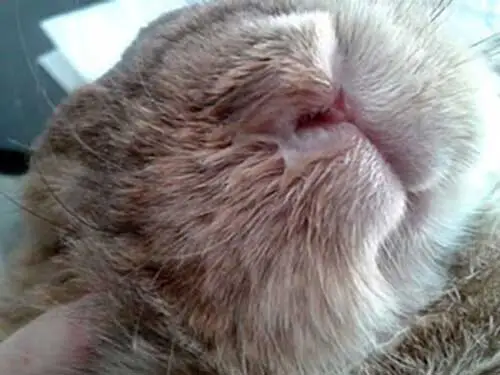

Symptoms of Pasteurellosis (Snuffles)
Rabbits infected with Pasteurella multocida exhibit a variety of symptoms, including:
- Nasal Discharge: Thick, mucoid discharge, often white or yellow, around the nose.
- Sneezing: Frequent sneezing due to nasal irritation.
- Watery Eyes: Discharge from the eyes, leading to wet fur around the eyes.
- Labored Breathing: Difficulty breathing or rapid breathing.
- Coughing: Occasionally seen in affected rabbits.
- Head Tilt: In severe cases, rabbits may develop a head tilt (torticollis) due to an inner ear infection.
- Lethargy: General lack of energy and activity.
- Anorexia: Reduced appetite leading to weight loss.
Causes of Pasteurellosis
Pasteurellosis is caused by the bacterium Pasteurella multocida, which can be transmitted through several means:
- Direct Contact: Close contact with infected rabbits.
- Aerosol Transmission: Spread through respiratory droplets.
- Contaminated Objects: Transmission via contaminated cages, food, water, or bedding.
Diagnosis of Pasteurellosis
Veterinarians diagnose pasteurellosis through:
- Clinical Examination: Observing clinical signs and symptoms.
- Nasal Swabs: Laboratory testing of nasal swabs to identify the presence of Pasteurella multocida.
- Blood Tests: Occasionally, blood tests may be conducted to assess the rabbit’s overall health.
- Imaging: Radiographs may be used to identify infections in the sinuses or middle ears.
Treatment of Pasteurellosis
Effective treatment of pasteurellosis involves the use of specific antibiotics. In Kenya, the following medications are commonly used:
- Enrofloxacin (Baytril): Administered orally or via injection, typically twice daily for 7-14 days. Available under brand names like Baytril.

- Ciprofloxacin: Another commonly used antibiotic, administered similarly to enrofloxacin.
- Penicillin: Often given as an injectable antibiotic. Long-acting penicillin (Penicillin G) can be used every 48 hours.

Mode of Administration:
- Oral Antibiotics: Given through drinking water or directly by syringe. Oral administration ensures the rabbit receives a consistent dose, but it requires the rabbit to drink or be force-fed.
- Injectable Antibiotics: Given subcutaneously or intramuscularly. Injectable forms are often preferred for severe infections due to quicker absorption and efficacy.
Prevention of Pasteurellosis
Preventing pasteurellosis involves several strategies:
- Good Hygiene: Regular cleaning and disinfecting of cages, feeders, and water containers.
- Reduce Stress: Minimize stress by providing a comfortable and stable environment.
- Quarantine New Rabbits: Isolate new or sick rabbits for at least two weeks before introducing them to the existing colony.
- Vaccination: While not commonly available, inquire with local veterinarians about potential vaccines.
Can Pasteurellosis Lead to Sudden Death?
Pasteurellosis can lead to sudden death, especially if it progresses to septicemia (blood poisoning) or causes severe respiratory distress. Rabbits with compromised immune systems or underlying health conditions are particularly at risk.
3. Enteritis Complex in Rabbits
Introduction
Enteritis Complex is a significant health issue in domestic rabbits, often leading to severe gastrointestinal distress and high mortality rates. This condition results from various infectious agents, including bacteria, viruses, and parasites, acting individually or in combination.

Symptoms of Enteritis Complex
Rabbits suffering from Enteritis Complex often exhibit a range of symptoms, including:
- Diarrhea: Watery, mucoid, or bloody stools.
- Bloating: Distended abdomen due to gas accumulation.
- Lethargy: Lack of energy and general weakness.
- Anorexia: Reduced appetite leading to weight loss.
- Dehydration: Reduced water intake and dry mucous membranes.
- Sudden Death: In severe cases, rabbits may die suddenly without showing prior symptoms.
Causes of Enteritis Complex
Enteritis Complex in rabbits is caused by multiple infectious agents, often acting together. The most common pathogens include:
- Coccidia (Eimeria spp.)
- Escherichia coli
- Clostridium spp. (including Clostridium perfringens and Clostridium spiroforme)
- Salmonella spp.
- Bacillus piliformis
- Rotavirus
Diagnosis of Enteritis Complex
Veterinarians diagnose Enteritis Complex through:
- Clinical Examination: Observing clinical signs and symptoms.
- Fecal Examination: Identifying coccidia oocysts and other pathogens.
- Bacterial Cultures: Culturing fecal samples to identify bacterial pathogens.
- Histopathology: Examining tissue samples for characteristic lesions.
Treatment of Enteritis Complex
Treatment of Enteritis Complex involves addressing the specific pathogens involved. In Kenya, the following medications are commonly used:
- Coccidiosis Treatment
- Toltrazuril (Baycox): Administered orally for 2 days, repeated 5 days later. Effective against coccidia.
- Sulfaquinoxaline: Used in poultry and can be administered to rabbits under veterinary guidance.
- Bacterial Infections Treatment
- Enrofloxacin (Baytril): Administered orally or via injection, typically twice daily for 7-14 days. Available under brand names like Baytril.
- Ciprofloxacin: Another commonly used antibiotic, administered similarly to enrofloxacin.
- Metronidazole: Effective against anaerobic bacteria like Clostridium spp., given orally or by injection.
- Supportive Care
- Fluids: Oral or subcutaneous fluids to prevent dehydration.
- Probiotics: To restore healthy gut flora, such as Protexin.
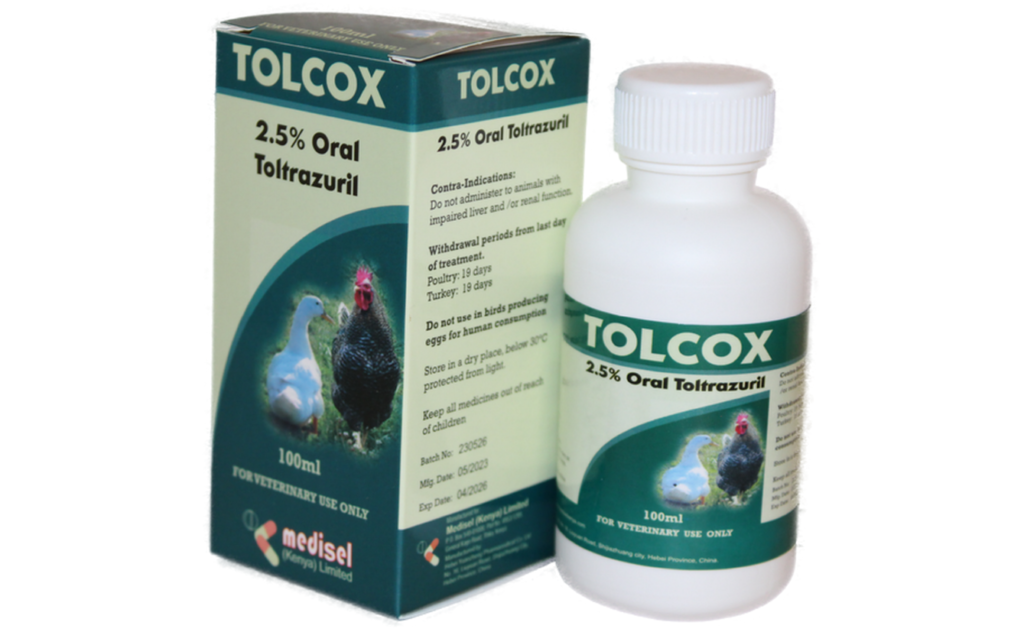
Mode of Administration:
- Oral Medication: Given through drinking water or directly by syringe. Oral administration ensures the rabbit receives a consistent dose but requires the rabbit to drink or be force-fed.
- Injectable Medication: Given subcutaneously or intramuscularly. Injectable forms are often preferred for severe infections due to quicker absorption and efficacy.
Prevention of Enteritis Complex
Preventing Enteritis Complex involves good husbandry practices and the use of preventive medications:
- Hygiene: Regular cleaning and disinfecting of cages, feeders, and water containers.
- Proper Diet: Providing a high-fiber diet to promote healthy gut function.
- Quarantine New Rabbits: Isolate new or sick rabbits for at least two weeks before introducing them to the existing colony.
- Vaccination: While not commonly available, inquire with local veterinarians about potential vaccines.
4. Mastitis in Rabbits
Introduction
Mastitis is an inflammation of the mammary glands, commonly seen in nursing does (female rabbits). It is primarily caused by bacterial infections and can lead to severe health complications if not promptly treated. This article provides detailed insights into the symptoms, causes, treatment, and prevention of mastitis in rabbits, with a specific focus on medications and preventive measures used in Kenya.

Symptoms of Mastitis
Rabbits with mastitis exhibit several symptoms, including:
- Swollen Mammary Glands: The affected glands are usually hot, swollen, and painful to the touch.
- Redness and Heat: Inflammation leads to redness and increased temperature in the affected area.
- Abscess Formation: Pus-filled abscesses may develop in the glands.
- Lethargy: The doe may be less active due to pain and discomfort.
- Reduced Milk Production: Affected does may produce less milk, impacting the growth and health of their kits.
- Anorexia: The doe may eat less due to discomfort.
Causes of Mastitis
Mastitis is primarily caused by bacterial infections, with common pathogens including:
- Staphylococcus aureus
- Pasteurella multocida
- Streptococcus spp.
These bacteria can enter the mammary glands through the teat openings, especially when the skin is damaged or the rabbit is immunocompromised.
Diagnosis of Mastitis
Veterinarians diagnose mastitis based on:
- Clinical Examination: Observing the physical signs of mastitis.
- Milk Sample Analysis: Examining the milk for the presence of bacteria.
- Bacterial Culture: Culturing bacteria from the milk to identify the specific pathogen.
Treatment of Mastitis
Effective treatment of mastitis involves antibiotics and supportive care. In Kenya, the following medications are commonly used:
- Antibiotic Treatment
- Enrofloxacin (Baytril): Administered orally or via injection. Typically given twice daily for 7-14 days. Available under brand names like Baytril.
- Penicillin G: Administered via injection. It is effective against many of the bacteria causing mastitis and is given every 48 hours.
- Oxytetracycline: Another antibiotic option, administered orally or by injection.
- Supportive Care
- Warm Compresses: Applied to the affected glands to reduce pain and inflammation.
- Pain Relief: Non-steroidal anti-inflammatory drugs (NSAIDs) like meloxicam can be prescribed by a veterinarian to reduce pain and inflammation.

Mode of Administration:
- Oral Antibiotics: Given through drinking water or directly by syringe. Oral administration ensures the rabbit receives a consistent dose but requires the rabbit to drink or be force-fed.
- Injectable Antibiotics: Given subcutaneously or intramuscularly. Injectable forms are often preferred for severe infections due to quicker absorption and efficacy.
Prevention of Mastitis
Preventing mastitis involves good husbandry practices and proactive health measures:
- Clean Housing: Regularly clean and disinfect the rabbit’s living area to prevent bacterial infections.
- Proper Nutrition: Ensure the doe receives a balanced diet to maintain her immune system.
- Gentle Handling: Handle nursing does gently to avoid injuring the mammary glands.
- Prompt Treatment of Injuries: Treat any cuts or abrasions on the doe promptly to prevent infection.
Can Mastitis Lead to Sudden Death?
Mastitis itself is not typically a direct cause of sudden death. However, if the infection becomes systemic (septicemia), it can lead to severe illness and potentially rapid decline if not treated promptly.
5. Bloat in Rabbits
Introduction
Bloat, also known as gastric dilation, is a life-threatening condition in rabbits characterized by the rapid buildup of gas and fluids in the stomach. It can cause a healthy rabbit to become critically ill very quickly.

Symptoms of Bloat
Rabbits with bloat exhibit several symptoms, including:
- Distended Abdomen: The stomach appears swollen and bloated.
- Lethargy: The rabbit may be less active due to discomfort and pain.
- Loss of Appetite: The rabbit may stop eating.
- Grinding Teeth: A sign of pain in rabbits.
- Rapid Breathing: Difficulty breathing due to the pressure on the diaphragm.
- Inability to Defecate: Blockage can prevent normal bowel movements.
- Collapse: In severe cases, the rabbit may collapse and show signs of shock.
Causes of Bloat
Bloat is primarily caused by intestinal obstructions. Common causes include:
- Trichobezoars (Hairballs): Accumulated hair that forms a blockage.
- Intestinal Cancer: Tumors causing obstruction.
- Carpet Fibers: Ingested foreign materials.
- Post-Surgery Adhesions: Scar tissue from previous surgeries.
- Intussusceptions: A part of the intestine telescoping into another part.
- Other Foreign Materials: Items ingested that should not have been.
Diagnosis of Bloat
Veterinarians diagnose bloat through:
- Clinical Examination: Observing physical signs such as a distended abdomen.
- Radiographs (X-rays): Confirming the presence of gas and fluid buildup.
- Blood Glucose Measurement: High glucose levels can indicate stress from an obstruction.
Treatment of Bloat
Treatment of bloat requires immediate veterinary intervention. In Kenya, the following treatments are commonly used:
- Medical Management
- Pain Relief: Strong analgesics such as meloxicam (Metacam) administered orally or by injection to alleviate pain.
- Fluid Therapy: Intravenous or subcutaneous fluids to rehydrate and correct electrolyte imbalances.
- Gastric Decompression: Insertion of a stomach tube under anesthesia to relieve gas pressure.
- Surgical Intervention
- Exploratory Laparotomy: Surgery to locate and remove the obstruction. This involves gently compressing the blockage (often hair) and “milking” it through to the large intestine for defecation.
- Post-Surgical Care: Continued fluid therapy, antibiotics, and pain management.

Mode of Administration:
- Oral Medications: Given through drinking water or directly by syringe, ensuring consistent dosing.
- Injectable Medications: Administered subcutaneously or intramuscularly for quicker absorption and immediate effect, especially critical in severe cases.
Prevention of Bloat
Preventing bloat involves good husbandry practices and dietary management:

- High-Fiber Diet: Ensure the rabbit has a diet rich in hay to promote healthy digestion.
- Regular Grooming: Regular brushing to reduce the amount of ingested hair.
- Avoiding Stress: Minimize changes in environment and handling to reduce stress.
- Clean Living Environment: Prevent the ingestion of foreign materials by maintaining a clean habitat.
- Preventive Supplements: Probiotics like Protexin can help maintain a healthy gut flora.
Can Bloat Lead to Sudden Death?
Yes, bloat can lead to sudden death if not treated promptly. The rapid increase in stomach size can put pressure on the chest, compromise breathing, and disrupt normal blood circulation, leading to shock and death.
Mange in Rabbits
Mange is a common parasitic disease affecting rabbits, caused by various mite species. It is characterized by severe skin irritation, hair loss, and in severe cases, can lead to secondary infections and even death. Here, we provide an in-depth look at the symptoms, causes, treatment, and prevention of mange in rabbits.


Symptoms
- Pruritus (severe itching): Rabbits infested with mange mites exhibit intense itching.
- Alopecia (hair loss): Patches of hair loss are common, often around the ears, face, and neck.
- Skin lesions: Formation of scabs, thickened skin, and crusts.
- Secondary infections: Due to scratching, secondary bacterial infections can occur, leading to more severe skin damage.
- Cachexia: Severe cases can lead to weight loss and general poor condition.
Causes
Mange in rabbits is primarily caused by mites, including:
- Sarcoptes scabiei: Causes sarcoptic mange, characterized by burrowing into the skin.
- Psoroptes cuniculi: Responsible for ear mange, leading to severe inflammation and discharge from the ears.
- Cheyletiella parasitovorax: Known as “walking dandruff,” causing flaky skin.
- Notoedres cati: Leads to notoedric mange, affecting the head and ears.
Treatment
Effective treatment of mange involves both systemic and topical acaricides. Below are the medications commonly used in Kenya, with clear instructions on how to administer them:
- Ivermectin
- Administration: Injectable form.
- Dosage: 0.2–0.4 mg/kg body weight.
- Frequency: Every 2 weeks for 2-3 treatments.
- Brands: Ivomec, Noromectin.
- How to Administer:
- Subcutaneous injection (under the skin). Ensure the rabbit is calm and use a sterile needle and syringe. Inject into the loose skin over the shoulder area.
- Selamectin
- Administration: Topical application.
- Dosage: 6–18 mg/kg body weight.
- Frequency: Once or twice at 28-day intervals.
- Brands: Revolution, Stronghold.
- How to Administer:
- Part the fur between the shoulder blades and apply the medication directly to the skin. Avoid contact with the fur to ensure proper absorption.
- Doramectin
- Administration: Injectable form.
- Dosage: 400 μg/kg body weight.
- Frequency: Once every two weeks.
- Brands: Dectomax.
- How to Administer:
- Subcutaneous injection. Similar to ivermectin, inject under the skin over the shoulder area using a sterile needle and syringe.
- Benzyl Benzoate
- Administration: Topical application.
- Usage: Applied directly to the affected areas of the skin.
- How to Administer:
- Apply with a clean cloth or sponge to the affected areas, ensuring thorough coverage. Use gloves to avoid skin irritation.

Prevention
Preventing mange in rabbits involves stringent hygiene and management practices:
- Regular cleaning and disinfection: Keeping the living environment clean and dry helps prevent mite infestations.
- Isolation of affected animals: Quarantining infested rabbits to prevent the spread to healthy animals.
- Use of acaricidal sprays and powders: Products like permethrin and deltamethrin can be used to treat the environment and prevent re-infestation.
- Nutritional supplements: Vitamins E, D3, A, and H can support the immune system and improve skin health. These can be found in multivitamin supplements for livestock.
Can Mange Lead to Sudden Death?
While mange itself typically does not cause sudden death, severe infestations can lead to significant secondary infections, severe discomfort, and overall poor health, which can ultimately result in death if untreated.
7. Pneumonia in Rabbits
Introduction
Pneumonia is a severe respiratory condition in rabbits characterized by inflammation of the lungs, which can lead to respiratory dysfunction. This condition may result from bacterial, viral, fungal, or parasitic infections, or from inhalation of foreign objects. It is crucial to diagnose and treat pneumonia promptly to prevent fatal outcomes.

Symptoms of Pneumonia
Rabbits suffering from pneumonia may exhibit a variety of symptoms, including:
- Anorexia: Loss of appetite.
- Weight Loss: Significant reduction in body weight.
- Lethargy: General lack of energy and activity.
- Fever: Elevated body temperature.
- Sneezing: Frequent sneezing due to respiratory irritation.
- Excessive Salivation: Increased production of saliva.
- Exercise Intolerance: Difficulty or reluctance to engage in physical activity.
- Nose Discharge: Mucus discharge from the nose, which can be clear, white, or yellow.
- Eye Discharge: Watery or purulent discharge from the eyes.
- Facial Abscesses: Swollen, infected areas on the face.
- Difficulty Breathing: Labored or rapid breathing.
- Coughing: Rare in rabbits but may occur in severe cases.
Causes of Pneumonia
Pneumonia in rabbits can be caused by several factors:
- Bacterial Infections: Common pathogens include Pasteurella multocida, Bordetella bronchiseptica, and Staphylococcus spp.
- Viral Infections: Viruses such as the rabbit hemorrhagic disease virus can lead to secondary bacterial pneumonia.
- Fungal Infections: Caused by inhalation of fungal spores, leading to lung infections.
- Parasitic Infections: Parasites like Encephalitozoon cuniculi can invade lung tissue.
- Environmental Factors: Smoke, chemicals, and poor ventilation can contribute to respiratory issues.
- Aspiration: Inhalation of foreign objects or food particles can lead to pneumonia.
Diagnosis of Pneumonia
Veterinarians diagnose pneumonia through:
- Clinical Examination: Observing physical signs and symptoms.
- Urine and Blood Tests: To identify the infectious organism and assess overall health.
- X-rays: Chest X-rays to identify abscesses and lesions in the lungs.
- Nasal and Throat Swabs: Laboratory analysis of discharge to identify pathogens.
Treatment of Pneumonia
Treatment of pneumonia in rabbits involves antimicrobial therapy and supportive care. In Kenya, the following treatments are commonly used:
- Antibiotics
- Enrofloxacin (Baytril): Effective against a broad spectrum of bacteria.
- Dosage: 5-10 mg/kg body weight.
- Administration: Oral or injectable. Given twice daily for 7-14 days.
- Brands: Baytril.
- Ciprofloxacin: Similar to enrofloxacin, used for severe bacterial infections.
- Dosage: 10 mg/kg body weight.
- Administration: Oral.
- Brands: Ciprovet.
- Trimethoprim-Sulfamethoxazole: Broad-spectrum antibiotic.
- Dosage: 30 mg/kg body weight.
- Administration: Oral or injectable, twice daily.
- Brands: Bactrim.
- Enrofloxacin (Baytril): Effective against a broad spectrum of bacteria.
- Antifungal Medications
- Itraconazole: Used for fungal infections.
- Dosage: 5-10 mg/kg body weight.
- Administration: Oral.
- Brands: Sporanox.
- Itraconazole: Used for fungal infections.
- Antiparasitic Medications
- Fenbendazole: Effective against Encephalitozoon cuniculi.
- Dosage: 20 mg/kg body weight.
- Administration: Oral, daily for 28 days.
- Brands: Panacur.
- Fenbendazole: Effective against Encephalitozoon cuniculi.
- Supportive Care
- Fluid Therapy: Intravenous or subcutaneous fluids to maintain hydration.
- Nebulization: Oxygen therapy to improve breathing.
- Nutritional Support: High-calorie supplements and syringe feeding if necessary.

Mode of Administration:
- Oral Medications: Given through drinking water or directly by syringe. Oral administration ensures consistent dosing but requires the rabbit to drink or be force-fed.
- Injectable Medications: Given subcutaneously or intramuscularly. Injectable forms are often preferred for severe infections due to quicker absorption and efficacy.
Prevention of Pneumonia
Preventing pneumonia involves maintaining good health and hygiene practices:
- Proper Ventilation: Ensure good airflow in the rabbit’s living area.
- Hygiene: Regular cleaning and disinfection of cages, feeders, and water containers.
- Vaccination: Regular vaccination against common respiratory pathogens.
- Avoiding Stress: Minimize stress through proper handling and a stable environment.
- Nutritional Supplements: Vitamins A, C, and E to boost the immune system.
Can Pneumonia Lead to Sudden Death?
Yes, pneumonia can lead to sudden death in rabbits, especially if it progresses rapidly or if the rabbit has a compromised immune system. Severe cases can result in respiratory failure and septicemia, leading to death if not treated promptly.
8. Myxomatosis
Introduction
Myxomatosis is a highly contagious and often fatal viral disease in rabbits, caused by the Myxoma virus. This disease primarily affects the skin, eyes, lungs, liver, and genitals. It is transmitted through biting insects such as fleas, mites, and mosquitoes, as well as direct contact between rabbits.

Symptoms of Myxomatosis
The symptoms of myxomatosis can vary depending on the strain of the virus and the rabbit’s immune status. Common symptoms include:
- Swelling and Redness: Around the eyes, nose, and genitals.
- Ulcers: Development of ulcers in affected areas.
- Runny Nose: Nasal discharge.
- Milky Eye Discharge: Leading to blindness in severe cases.
- Breathing Problems: Difficulty in breathing due to lung involvement.
- Loss of Appetite: Leading to weight loss.
- Lethargy: General lack of energy and activity.
Causes of Myxomatosis
Myxomatosis is caused by the Myxoma virus, which is spread through:
- Biting Insects: Fleas, mites, and mosquitoes are primary vectors.
- Direct Contact: Between infected and healthy rabbits.
- Contaminated Objects: Such as bedding, food, and water containers.
Diagnosis of Myxomatosis
Veterinarians diagnose myxomatosis through:
- Clinical Examination: Observing the characteristic signs and symptoms.
- Laboratory Tests: Confirming the presence of the Myxoma virus.
Treatment of Myxomatosis
There is no cure for myxomatosis, but supportive care can help manage symptoms and improve survival chances in vaccinated rabbits. In Kenya, the following treatments are commonly used:
- Supportive Care
- Keeping the Rabbit Warm: Ensuring a comfortable and warm environment.
- Fluid Therapy: Administering fluids through a drip to prevent dehydration.
- Nutritional Support: Feeding soft, palatable foods and assisting with feeding if necessary.
- Antibiotics: To prevent secondary bacterial infections.
- Enrofloxacin (Baytril): Administered orally or by injection.
- Dosage: 5-10 mg/kg body weight.
- Brands: Baytril.
- Trimethoprim-Sulfamethoxazole: Broad-spectrum antibiotic.
- Dosage: 30 mg/kg body weight.
- Brands: Bactrim.
- Enrofloxacin (Baytril): Administered orally or by injection.
Mode of Administration:
- Oral Medications: Given through drinking water or directly by syringe. Ensures consistent dosing but requires the rabbit to drink or be force-fed.
- Injectable Medications: Given subcutaneously or intramuscularly. Preferred for severe infections due to quicker absorption and efficacy.
- Antiviral Drugs
- While specific antiviral treatments for myxomatosis are not typically used, supportive care remains crucial.
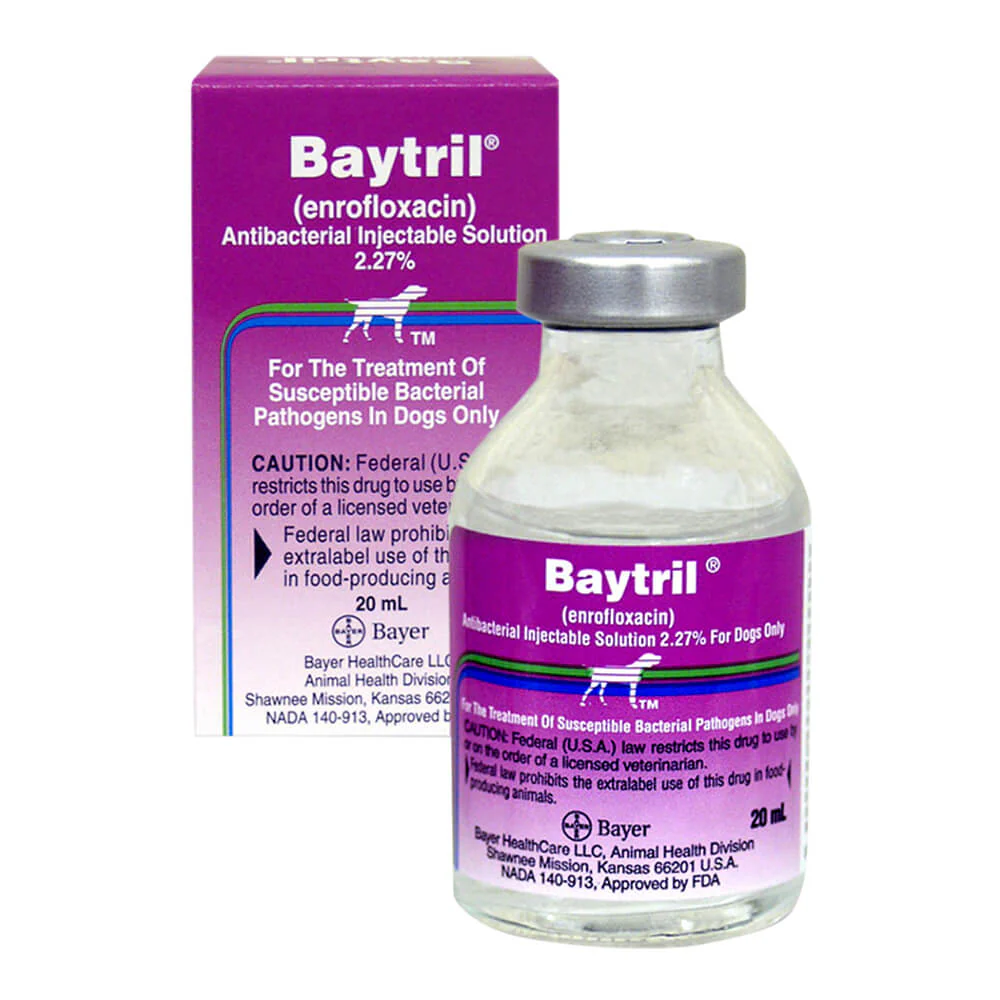
Prevention of Myxomatosis
Preventing myxomatosis involves several strategies:
- Vaccination: The best preventive measure. Vaccinated rabbits may still contract a mild form of the disease but generally recover with supportive care.
- Insect Control: Reducing exposure to fleas, mites, and mosquitoes.
- Insect Repellents: Safe for rabbits.
- Flea Treatments for Surrounding Pets: To prevent fleas from spreading to rabbits.
- Hygiene: Regular cleaning and disinfection of cages, feeders, and water containers.
- Isolation of New or Sick Rabbits: To prevent the spread of the virus.
Can Myxomatosis Lead to Sudden Death?
Yes, myxomatosis can lead to sudden death, especially in unvaccinated rabbits. The disease progresses rapidly and can cause severe respiratory and systemic complications, leading to death within one to two weeks.
9. Viral Hemorrhagic Disease (VHD)
Introduction
Viral Hemorrhagic Disease (VHD), also known as Rabbit Hemorrhagic Disease (RHD) or rabbit calicivirus disease (RCD), is a highly infectious and often fatal condition affecting both wild and domestic rabbits. The disease is caused by the Rabbit Hemorrhagic Disease Virus (RHDV), which leads to severe internal bleeding and organ failure.

Symptoms of VHD
VHD often progresses rapidly, and unfortunately, many rabbits may die suddenly without showing any clinical signs. However, when symptoms do appear, they can include:
- High Fever: One of the initial signs.
- Lethargy: General lack of energy.
- Difficulty Breathing: Respiratory distress.
- Loss of Appetite: Refusal to eat.
- Blood in Discharge: Blood may be present in nasal or oral discharge.
- Lack of Coordination: Neurological signs like stumbling or paralysis.
Causes of VHD
VHD is caused by the Rabbit Hemorrhagic Disease Virus (RHDV), which can be spread through several means:
- Direct Contact: Between infected and healthy rabbits.
- Fomites: Contaminated objects such as bedding, food, water containers, and clothing.
- Insects and Other Animals: Flies, birds, rodents, and humans can transmit the virus via contaminated fur or surfaces.
- Environmental Stability: The virus can remain active in the environment for extended periods, even under extreme conditions.
Diagnosis of VHD
Veterinarians diagnose VHD through:
- Clinical Examination: Observing symptoms.
- Post-mortem Examination: Identifying characteristic lesions and hemorrhages.
- Laboratory Tests: PCR tests to confirm the presence of RHDV.
Treatment of VHD
Currently, there is no specific cure for VHD, and treatment is largely supportive:
- Supportive Care
- Fluid Therapy: To prevent dehydration.
- Nutritional Support: Feeding soft, palatable foods or assisted feeding.
- Antibiotics: To prevent secondary bacterial infections.
- Enrofloxacin (Baytril): Administered orally or by injection.
- Dosage: 5-10 mg/kg body weight.
- Brands: Baytril.
- Trimethoprim-Sulfamethoxazole: Broad-spectrum antibiotic.
- Dosage: 30 mg/kg body weight.
- Brands: Bactrim.
- Enrofloxacin (Baytril): Administered orally or by injection.
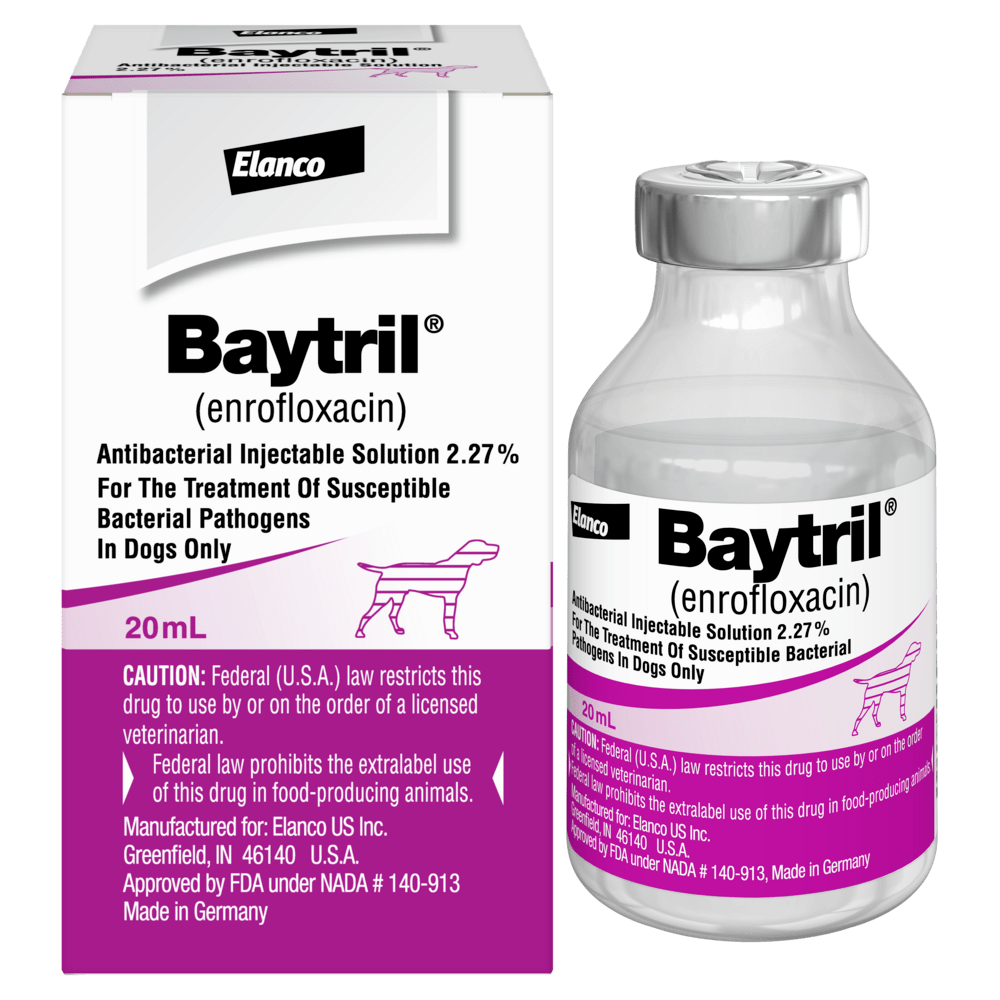
Mode of Administration:
- Oral Medications: Administered through drinking water or directly by syringe. Oral administration ensures consistent dosing but requires the rabbit to drink or be force-fed.
- Injectable Medications: Given subcutaneously or intramuscularly. Injectable forms are often preferred for severe infections due to quicker absorption and efficacy.
Prevention of VHD
Preventing VHD is crucial due to the high fatality rate and lack of specific treatment. The following measures are recommended:
- Vaccination: The best preventive measure.
- Types of Vaccines: Monovalent vaccines (against VHD) and bivalent vaccines (against both VHD and myxomatosis).
- Schedule: Vaccinations can be given from 3 months of age, with annual boosters recommended.
- Brands Available in Kenya: Nobivac Myxo-RHD, Filavac VHD K C+V.
- Hygiene and Biosecurity
- Clean Living Areas: Regular cleaning and disinfection of cages, feeders, and water containers.
- Insect Control: Use of insect repellents and maintaining mosquito-proof environments.
- Avoid Contact with Wild Rabbits: Keep domestic rabbits away from areas frequented by wild rabbits.
- Quarantine New Rabbits: Isolate new rabbits for at least two weeks before introducing them to the colony.
- Handling and Transport
- Wash Hands: Thoroughly before and after handling rabbits.
- Disinfect Shoes and Clothing: After visiting areas where wild rabbits may be present.
Can VHD Lead to Sudden Death?
Yes, VHD can lead to sudden death, often with no apparent signs beforehand. This rapid progression underscores the importance of preventive measures, particularly vaccination.
10. Ear Mites (Psoroptes cuniculi)
Introduction
Ear mites, scientifically known as Psoroptes cuniculi, are common ectoparasites that infest the ears of rabbits. These mites cause severe irritation and can lead to significant health issues if left untreated.


Symptoms of Ear Mites
Rabbits infested with Psoroptes cuniculi exhibit several symptoms, including:
- Intense Itching: Rabbits frequently scratch their ears.
- Head Shaking: Persistent head shaking due to discomfort.
- Crusty Ears: Thick, crusty scabs inside the ears.
- Hair Loss: Around the ears due to excessive scratching.
- Ear Droop: One or both ears may droop due to inflammation.
- Redness and Swelling: Visible signs of inflammation.
- Secondary Infections: Bacterial infections can develop due to constant scratching and open wounds.
Causes of Ear Mites
Ear mites in rabbits are caused by the parasitic mite Psoroptes cuniculi, which can be transmitted through:
- Direct Contact: Between infested and healthy rabbits.
- Contaminated Objects: Such as bedding, grooming tools, and human hands.
Diagnosis of Ear Mites
Veterinarians diagnose ear mites through:
- Clinical Examination: Observing the physical signs and symptoms.
- Microscopic Examination: Identifying mites from ear swab samples.
Treatment of Ear Mites
Effective treatment of ear mites involves the use of acaricides and supportive care. In Kenya, the following medications are commonly used:
- Ivermectin
- Administration: Injectable form.
- Dosage: 200-400 µg/kg body weight.
- Frequency: Administered once every 7-14 days for 2-3 treatments.
- Brands: Ivomec, Noromectin.
- How to Administer:
- Subcutaneous injection (under the skin). Ensure the rabbit is calm and use a sterile needle and syringe. Inject into the loose skin over the shoulder area.
- Selamectin
- Administration: Topical application.
- Dosage: 6-18 mg/kg body weight.
- Frequency: Administered once every 28 days for 2 treatments.
- Brands: Revolution, Stronghold.
- How to Administer:
- Part the fur between the shoulder blades and apply the medication directly to the skin. Avoid contact with the fur to ensure proper absorption.
- Moxidectin
- Administration: Topical application.
- Dosage: As per veterinary advice.
- Frequency: Administered as a single dose.
- Brands: Advocate (also used for cats and dogs).
- How to Administer:
- Apply directly to the skin between the shoulder blades.
- Benzyl Benzoate
- Administration: Topical application.
- Usage: Applied directly to the affected areas of the skin.
- How to Administer:
- Apply with a clean cloth or sponge to the affected areas, ensuring thorough coverage. Use gloves to avoid skin irritation.

Prevention of Ear Mites
Preventing ear mites involves good husbandry practices and regular checks:
- Regular Cleaning: Keep the living environment clean and dry to prevent infestations.
- Isolation of New Animals: Quarantine new rabbits before introducing them to the existing population.
- Regular Ear Checks: Routine examination of ears to catch infestations early.
- Use of Preventive Treatments: Regularly use acaricidal treatments, especially in high-risk environments.
Can Ear Mites Lead to Sudden Death?
While ear mites themselves typically do not cause sudden death, severe infestations can lead to significant discomfort, secondary infections, and overall poor health. If left untreated, the resulting complications can potentially lead to death.
11. Toxicity in Rabbits
Introduction
Toxicity in rabbits is a significant concern, as rabbits are highly sensitive to various toxins found in plants, chemicals, and foods. Ingesting toxic substances can lead to severe health issues and even sudden death.
Symptoms of Toxicity
The symptoms of toxicity in rabbits can vary depending on the toxin ingested but commonly include:
- Gastrointestinal Symptoms: Diarrhea, bloating, and abdominal pain.
- Neurological Symptoms: Tremors, seizures, incoordination, and paralysis.
- Respiratory Symptoms: Difficulty breathing, nasal discharge, and cyanosis (bluish discoloration of the skin).
- Behavioral Changes: Lethargy, weakness, and unusual behavior.
- Cardiovascular Symptoms: Irregular heart rate and low blood pressure.
- Excessive Salivation: Drooling and mouth frothing.
Causes of Toxicity
Toxicity in rabbits can be caused by ingesting various toxic substances, including:
- Toxic Plants: Some common toxic plants in Kenya include:
Avocado (Persea americana)
- Toxic Parts: Leaves, skin, pit.
- Symptoms: Gastrointestinal upset, cardiac arrhythmias, and death.

Tomato Plant (Solanum lycopersicum)
- Toxic Parts: Leaves and stems (green parts).
- Symptoms: Gastrointestinal upset, drooling, lethargy, and death.

Rhubarb (Rheum rhabarbarum)
- Toxic Parts: Leaves.
- Symptoms: Kidney failure, vomiting, diarrhea, and death.

Potato Plant (Solanum tuberosum)
- Toxic Parts: Green parts and sprouts.
- Symptoms: Gastrointestinal distress, neurological symptoms, and death.

Eucalyptus (Eucalyptus spp.)
- Toxic Parts: Leaves.
- Symptoms: Gastrointestinal irritation, weakness, and death.

- Oleander (Nerium oleander): Highly toxic, causing severe gastrointestinal and cardiac issues.

- Castor Bean (Ricinus communis): Contains ricin, a potent toxin causing severe gastrointestinal and systemic effects.
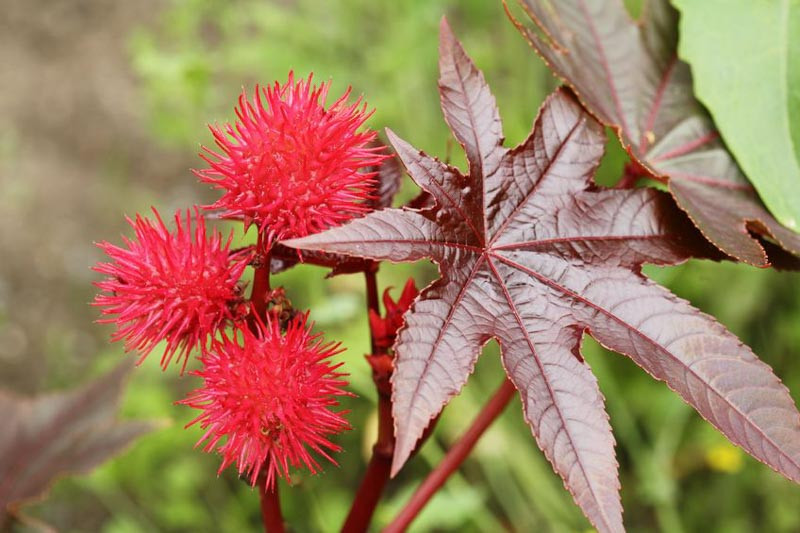
- Lantana (Lantana camara): Causes liver damage, photosensitization, and gastrointestinal symptoms.

- Datura (Datura stramonium): Causes hallucinations, seizures, and respiratory failure.
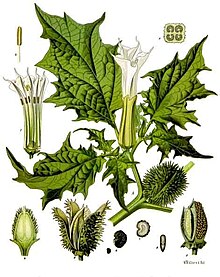
- Nicotiana (Nicotiana tabacum): Contains nicotine, leading to neurological and cardiovascular symptoms.

- Pesticides and Herbicides: Chemicals used in gardening and agriculture.
- Household Chemicals: Cleaning agents, antifreeze, and rodenticides.
- Human Foods: Chocolate, caffeine, and certain fruits like avocado.
Diagnosis of Toxicity
Veterinarians diagnose toxicity through:
- Clinical Examination: Observing symptoms and medical history.
- Laboratory Tests: Blood tests, urine analysis, and specific toxin screening.
- Post-mortem Examination: In cases of sudden death, to identify the cause.
Treatment of Toxicity
Treatment of toxicity involves removing the toxin from the rabbit’s system and providing supportive care. In Kenya, the following treatments are commonly used:
- Activated Charcoal
- Usage: Administered to absorb toxins in the gastrointestinal tract.
- Dosage: As per veterinary advice.
- Administration: Oral, given through a syringe mixed with water.
- Fluid Therapy
- Usage: To maintain hydration and support kidney function.
- Administration: Intravenous or subcutaneous fluids.
- Gastrointestinal Protectants
- Usage: To soothe the digestive tract.
- Examples: Kaolin-pectin (found in anti-diarrheal medications for pets).
- Administration: Oral, as directed by a veterinarian.
- Specific Antidotes
- Usage: When available and applicable for certain toxins.
- Examples: Atropine for organophosphate poisoning.
- Administration: Injection, as directed by a veterinarian.
- Supportive Care
- Nutritional Support: Feeding soft, palatable foods or assisted feeding.
- Pain Relief: NSAIDs like meloxicam to alleviate pain and inflammation.
- Antibiotics: To prevent secondary infections if the rabbit is immunocompromised.
Mode of Administration:
- Oral Medications: Given through drinking water or directly by syringe. Oral administration ensures consistent dosing but requires the rabbit to drink or be force-fed.
- Injectable Medications: Given subcutaneously or intramuscularly. Injectable forms are often preferred for severe cases due to quicker absorption and efficacy.
Prevention of Toxicity
Preventing toxicity involves careful management of the rabbit’s environment and diet:
- Avoid Toxic Plants: Ensure that the rabbit’s environment is free from known toxic plants.
- Safe Use of Chemicals: Keep household chemicals, pesticides, and herbicides out of reach of rabbits.
- Proper Diet: Provide a balanced diet with safe, rabbit-friendly foods.
- Supervision: Monitor free-ranging rabbits to prevent them from ingesting harmful substances.
- Education: Learn and educate others about the common toxic substances for rabbits.
Can Toxicity Lead to Sudden Death?
Yes, ingestion of highly toxic substances can lead to sudden death in rabbits, often with little or no warning signs. Immediate veterinary intervention is crucial to improve the chances of survival.



